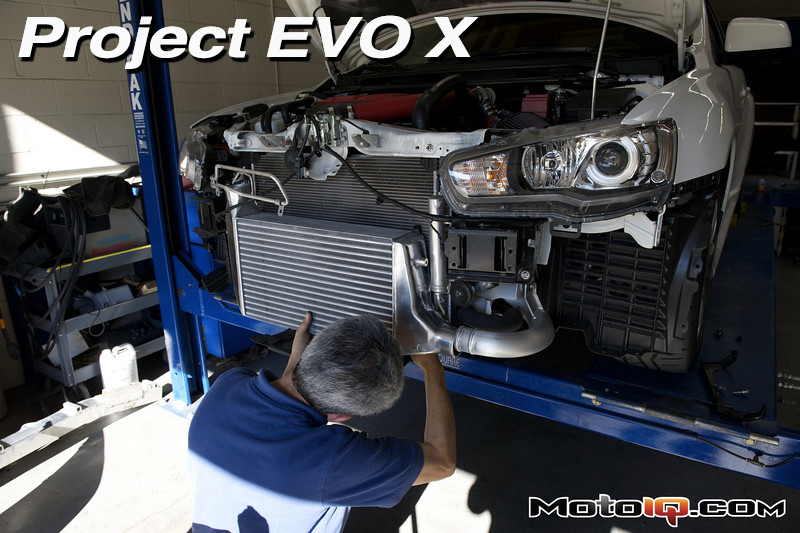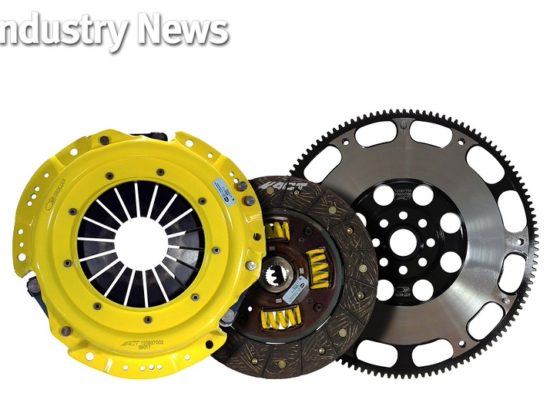,
 |
| Here the BOV is cleanly plugged back into the intake. |
 |
| The intercooler is all ready to go! |
 |
| While we were in there we decided to change out our stock radiator with one of Koyo’s all aluminum racing radiators. Our taller intercooler obscures a lot of the radiator’s frontal area so we think this is a prudent upgrade. Koyo has recently redesigned many of their popular applications for even better cooling. Koyo’s new radiator core replaces the wide fin pitch 53mm thick core of the old racing radiators with a new high fin density, super efficient 36mm thick “Hyper V” core. Even though the core is thinner at 36mm vs the old 53mm it is equally as effective due to its much higher fin density. Even at 36mm Koyo’s new core is still 30% thicker than the stock core. The Hyper V core saves weight, improves space and air circulation to the engine and other components. Thinner cores are more efficient heat exchanger by nature. As a general rule of thumb for most heat exchangers, the majority of heat exchange takes place in the first 37mm of the core. Contrary to popular belief, going thicker does not gain that much more cooling capacity. |
 |
| The Koyo radiator features all TIG welding and perfect factory like fitment. The radiator drops into the car and all brackets and fans bolt right up. |
 |
| The stock radiator uses plastic crimped on tanks. The Koyo has TIG welded all aluminum tanks, making it the much stronger piece. This is really good, especially if you are planning to run a higher pressure radiator cap to help reduce water pump cavitation and localized boiling inside the cylinder head. |
 |
| Here you can see that the Koyo part is thicker than stock. The Hyper V core is pretty close to the theoretical most efficient core thickness of 1.5 inches. |



